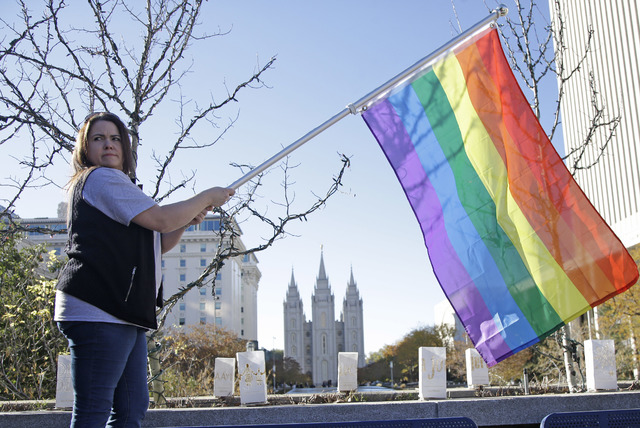‘Mormon and Gay’ website launched to help LDS LGBT members

SALT LAKE CITY — Mormon leaders are telling gay and lesbian members in a new website launched Tuesday that attraction to people of the same-sex isn’t a sin or a measure of their faithfulness, but reminding them that acting on those feelings by having sex violates fundamental doctrinal beliefs that will not change.
The message is part of a “Mormon and Gay” church website that includes dozens of articles, teachings, videos and stories from church members who identify themselves as gay and lesbian. It is a remake of a site first created nearly four years ago that marked the religion’s most significant outreach to gays and lesbians.
The website is designed to encourage compassion and acceptance for LGBT people and strike a softer tone on an issue that has led to criticism of the conservative Utah-based The Church of Jesus Christ of Latter-day Saints recently.
“There is no change in the church’s position of what is morally right,” church leader Dallin H. Oaks on the website. “But what is changing—and what needs to change—is helping church members respond sensitively and thoughtfully when they encounter same-sex attraction in their own families, among other church members, or elsewhere.”
The Mormon church is one of many conservative faith groups staunchly upholding theological opposition to same-sex relationships amid widespread social acceptance and the U.S. Supreme Court’s decision to legalize gay marriage in the US last year, while attempting to foster a compassionate stance toward LGBT people.
After the church suffered intense criticism for helping lead the fight in 2008 for California’s Proposition 8 constitutional ban on gay marriage passed by voters, the religion spent the next several years carefully carving out a more empathetic tone on LGBT issues.
That trajectory was interrupted, however, when the church last year adopted new rules banning children living with gay parents from being baptized until they are 18. The move triggered a new wave of outrage from LGBT members and straight members pushing for more acceptance.
The church is not changing that policy or its opposition to same-sex marriage with the new website, which is intended to be a resource and provide hope for LGBT members, their families and friends, said L. Whitney Clayton, a member of the religion’s second-tier world leadership council called the Quorum of the Seventy.
“We hope it will help people minister to one another,” Clayton said in an interview with The Associated Press. “That it will increase love, that it will help increase hope.”
The website includes stories of two young Mormons who identify as gay who have chosen to remain single and celibate despite hardship, loneliness and struggles so they can serve missions and remain as fully participating members of the church rather than risk being kicked out. They both say receiving unconditional support and love from family was vital for them.
The church also advises that sexual attraction does not completely define a person.
“There are active church members who experience same-sex attraction and never choose to identify themselves using a label. Our primary identity will always be as a child of God,” the website says.
The church acknowledges on the website that suppressing feelings about being attracted to the same sex can lead to shame and negative internal dialogue. But it advises people to “prayerfully” consider who they tell if they decide to come out.
“Sharing those feelings with a trusted confidant can be liberating and healing,” the website says. “Some, however, wish they had waited longer or at least limited the number of people to whom they disclosed their feelings, so this decision shouldn’t be based on yielding to pressure to ‘come out’ publicly or openly identify as gay.”
In a frequently asked questions section, the church poses the question, “If I’m faithful enough, will my attractions go away?”
“The intensity of same-sex attraction is not a measure of your faithfulness,” it answers. “Many people pray for years and do all they can to be obedient in an effort to reduce same-sex attraction, yet find they are still attracted to the same sex.”
It adds: “For some, feelings of same-sex attraction, or at least the intensity of those feelings, may diminish over time. In any case, a change in attraction should not be expected or demanded as an outcome by parents or leaders.”